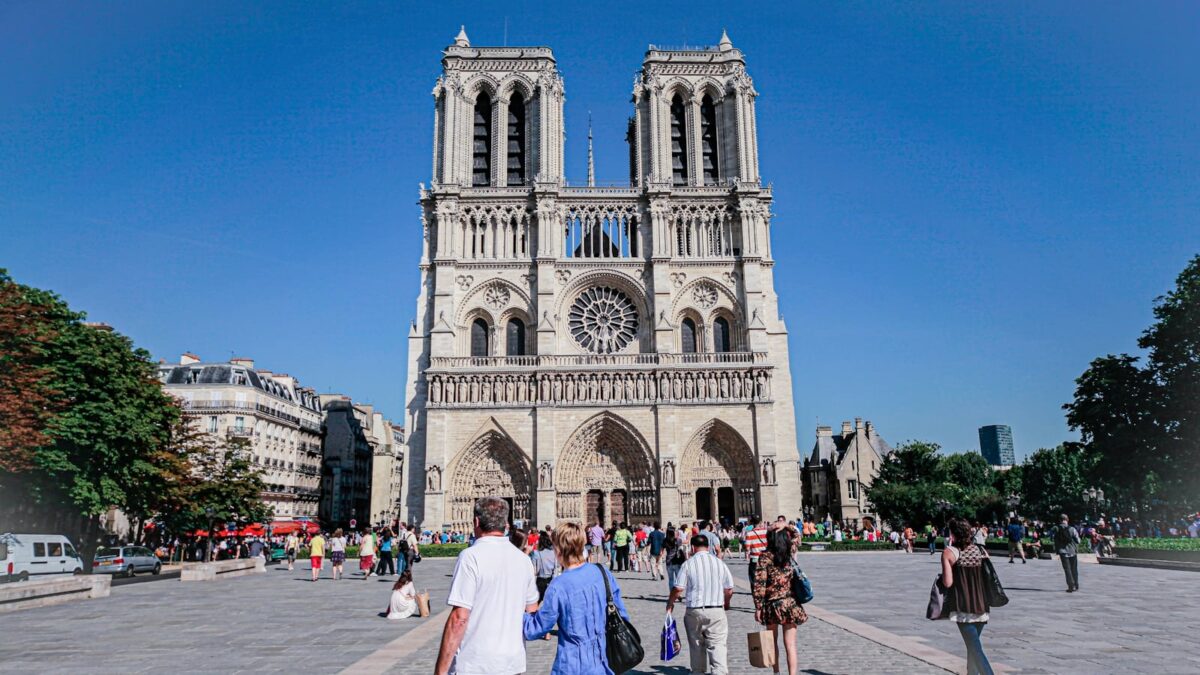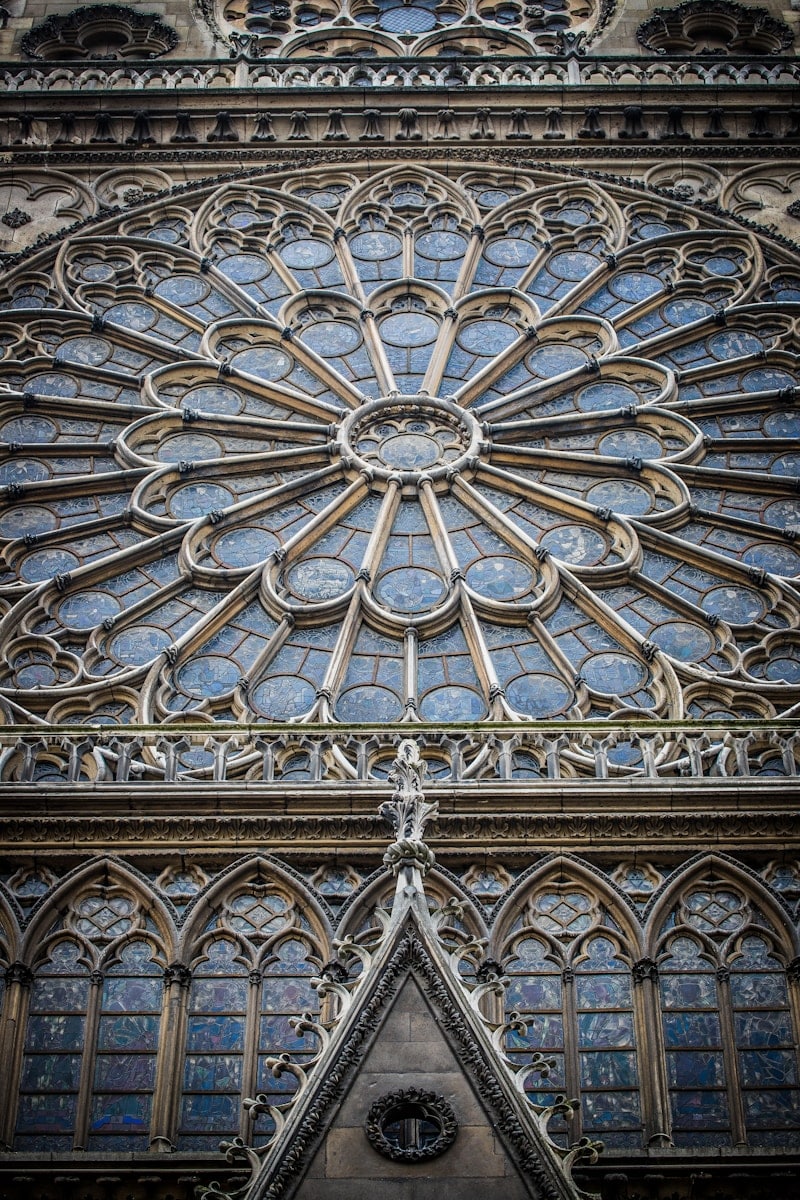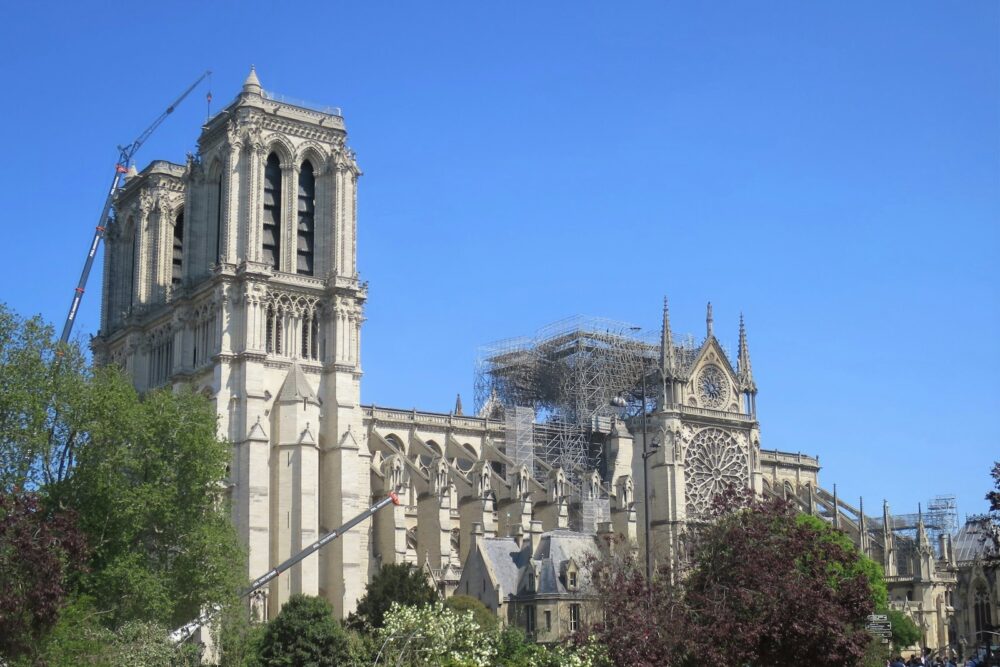
Notre-Dame – history and reopening

Notre-Dame de Paris Cathedral is one of France’s most famous landmarks and a masterpiece of Gothic architecture. With its eventful history dating back over 850 years and its role as a cultural, religious and architectural symbol, Notre-Dame has inspired people from all over the world. In this article, we take a look at the cathedral’s origins, its unique features and its significance over the centuries.
THE ORIGINS OF THE CATHEDRAL
Notre-Dame was commissioned in 1163 under Bishop Maurice de Sully. Construction took over 180 years and was completed in 1345. The aim was to build a monumental church that reflected both the power of the Catholic Church and the growing influence of Paris as the cultural center of Europe.
The architecture of the cathedral is based on the early Gothic style with elements such as pointed arches, buttresses and high vaults. These innovations made larger windows possible, which flooded the interior with light.
Notre-Dame is a prime example of Gothic architecture. The giant buttresses, the high towers and the artistically designed gargoyles are characteristic of this era. The three larges rose windows, which tell biblical stories and refract the light in a spectacular way, are particularly impressive.

RELIGIOUS AND CULTURAL SIGNIFICANCE
- The cathedral was the scene of numerous historical events, including the coronation of Napoleon in 1804 and the beatification of Joan of Arc. It served not only as a place of worship, but also as a symbol of France’s unity and cultural identity.
- It was also an important example of the power and influence of the Catholic Church in France.
MODERN TIMES AND RESTORATIONS
- French Revolution (1789-1799): During the French Revolution, the cathedral was looted and many of its treasures were destroyed. The bells were melted down, and the building was temporarily used as a warehouse.
- Victor Hugo and the rediscovery (1831): Victor Hugo’s novel “The Hunchback of Notre-Dame” (originally “Notre-Dame de Paris”) was instrumental in reviving public interest in the cathedral. A wave of restoration work followed and aroused widespread interest in Gothic architecture.
- Restoration by Viollet-le-Duc (1844-1864): Under the direction of the architect Eugène Viollet-le-Duc, extensive restoration work was carried out in the 19th century. He also added new elements, including the famous gargoyles, which are now considered a symbol of Notre-Dame. He also added the iconic spire.
Ad
Modern history
- Second World War: During the Second World War, Notre-Dame remained largely intact, although it was at the center of plans to destroy Paris. However, the cathedral’s bells were spared as they were a symbol of freedom.
- Symbol of national events: Notre-Dame was the scene of many national celebrations, including the funeral service for General Charles de Gaulle in 1970.
FIRE IN 2019
- April 2019: A devastating fire destroyed the spire, the roof and parts of the upper structure of the cathedral.
- Reaction: The fire caused worldwide consternation. Within a few days, hundreds of millions of euros were raised for the reconstruction.
- Restoration: Work began immediately after the fire and was planned to restore the cathedral to its original style.

REOPENING 2024
Notre-Dame de Paris Cathedral was ceremoniously reopened on December 7, 2024, almost five years after the devastating fire in April 2019. The ceremony was presided over by Archbishop Laurent Ulrich and attended by numerous dignitaries, including President Emmanuel Macron.
On December 8, 2024, the first mass was held in the restored cathedral, at which a new bronze altar was consecrated. The ceremony was attended by 2,500 people, including President Macron and other prominent guests.
The restoration, which cost around 760 million US dollars, included the reconstruction of the spire and the cleaning of the interior, making the cathedral appear brighter and more inviting.
Notre-Dame is now accessible to visitors again. However, due to high demand, reservations are required and can be made via the cathedral’s official website.
The reopening of Notre-Dame symbolizes not only the successful restoration of an important historical landmark, but also the resilience and cohesion of the community that worked to rebuild it.




